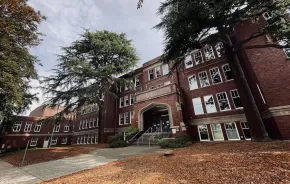 You have a bright child who loves to learn and you’ve dreamed of a private education for him since his birth. But the economy being what it is, you’re revisiting that dream.
You have a bright child who loves to learn and you’ve dreamed of a private education for him since his birth. But the economy being what it is, you’re revisiting that dream.
Now what?
With some luck — and planning — you might be able to find the right educational match for your child with an “optional” program offered within your local public school district.
Dan Phelan, director of accelerated programs for the Lake Washington School District, oversees Quest, the district’s accelerated, or “gifted,” learning program. Phelan has seen an increase in applications to the Quest program over the past two years. “The economy is forcing some Eastside families to elect public education over private,” he says.
The Quest program is one of a range of “optional” programs that many local districts offer. For example, the Lake Washington School District offers what’s called Choice Schools (there are 11 of them in the elementary and secondary grades); in the Bellevue School District, there is Puesta del Sol, a Spanish language immersion program; and the Tacoma school district includes the Tacoma School of the Arts, a magnet high school.
Seattle Public Schools offers numerous options, from alternative elementary programs, including Thornton Creek School, to Garfield High School’s magnet program for the school district’s Accelerated Progress Program for highly gifted students.
Two public optional programs, Lake Washington’s International Community School and the Bellevue School District’s International School, have won national recognition from Newsweek and USA Today. Both programs take pride in their records of high WASL and SAT scores.
Getting in
Some optional programs are more popular than others. In fact, securing a spot in a highly coveted program can be just as difficult (if not more so) as getting admitted to a top private school. Applications for the 60 seventh- through 12th-grade spots at the International Community School, for example, jumped from 322 in the 2009 school year to 408 in this school year.
Some schools use a lottery system to select students, and others rely on tests. Eligible students must live in the program’s school district.
How can you find the best fit for your child? Here are some tips:
Start shopping for options early by using the district website and networking. Parents interested in gifted programs or other options should go to their district’s website for detailed information, says Phelan. Terms to search for include “choice,” “advanced or accelerated learning,” “magnet” and “alternative.” Pay close attention to deadlines, which can change each year, he notes.
Piper Sangston of Bellevue considered each of her children’s educational needs and then searched for just the right programs for each of her five children. Parents need to know that some public elementary school options require parents to apply before the child enters kindergarten, Sangston says. To secure a spot for her 8-year-old daughter in a popular Spanish immersion elementary school program, she had to apply while her daughter was still in preschool.
Ballard parent Karen Hamilton encourages parents to network with other parents and join organizations that support their child’s needs. She belonged to the Washington state branch of the International Dyslexia Association, which, she says, helped her understand what support her son might be entitled to through the school system and how to get it.
Remember that your student must reside in the district in order to apply. Residency is determined by “where the child sleeps most nights,” says Phelan. Renting an apartment in the district but not living there, for example, does not qualify.
Pay a visit to the school. Attending the official “information night” and taking a school tour are often requirements for getting into a program. For the Lake Washington School District choice elementary school programs, parents of prospective students are asked to sign in at both the information night and on the tours, documenting that they attended.
While on the tour, don’t focus on the building, advises Sangston. Instead, she says, “Look at the work up on the walls and observe the teachers. How are they interacting with the students, are they healthy and happy? Have they been there a long time? Are there a lot of applicants when a job opens up?”
Make sure your child can handle the testing requirements. “Accelerated” or “advanced” learning programs often require standardized testing as part of the process. Phelan says that children often enter the Quest program in first grade, which means they must apply and test for the program early in their kindergarten year. Those tests require that a kindergartener “be able to read at or above first-grade level, follow instructions and be able to correctly fill in a ‘bubble-style’ standardized test,” he says.
Have a “plan B” in case things don’t work out. Many choice and alternative programs hold lotteries to determine who can get in. Often, there are far more applicants than openings. Your child may not get in — or you may find the school is not the right fit once your child begins.
Tweens and teens should get a vote on where they will go to school. Parents need to pick the school and support programs for their elementary-school-age children, says Hamilton. But as a child grows older, the tween or teen should have a vote regarding where they will attend school.
Remember, there is no perfect school. Keep your options open when possible. The key to making a good choice for your child is carefully considering your long-term goals, including social skills, and what’s good for the family in general, says Hamilton. While she and her husband were delighted that their boys attended public school through high school, they “never said never” to private school as an option if they couldn’t successfully meet both kids’ needs with public school programs, she notes.
Both of Kathleen F. Miller’s children attend a public choice school.











